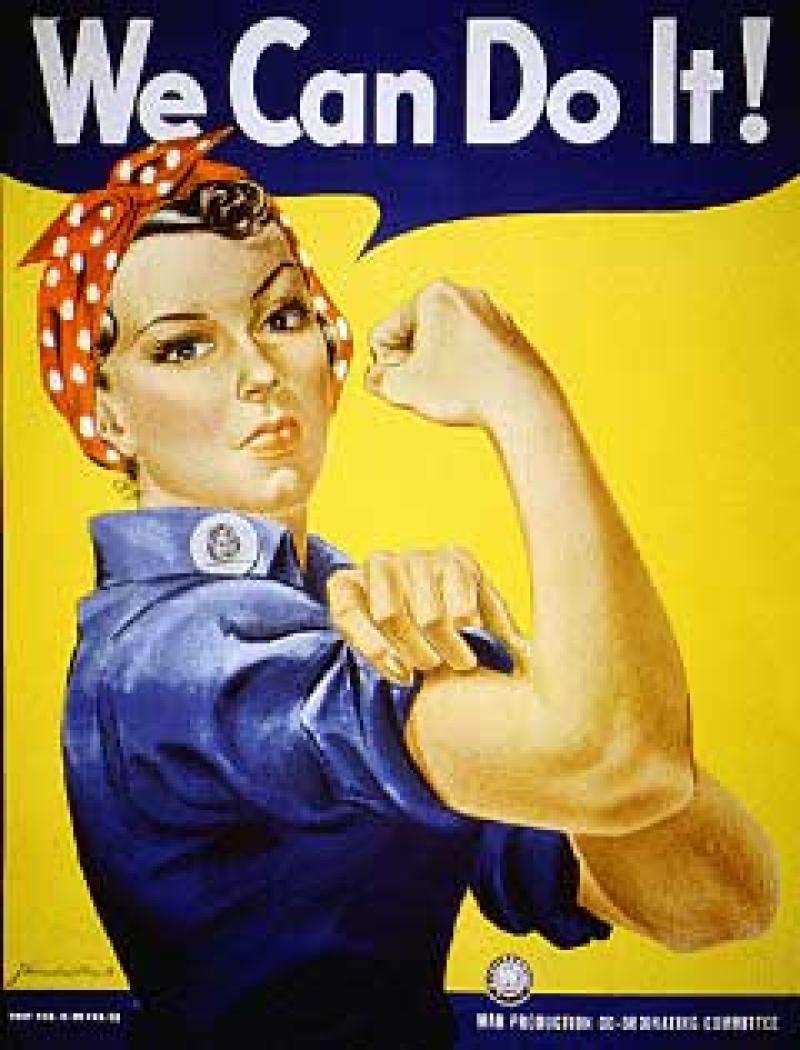Lesson Plan

Introduction
You might first provide an overview of the economic and social changes put in place by the war. Cite for example the end of the Depression, the entry of millions into the armed services, and the entry of millions more into the work force at home. You could mention areas such as the migration of rural whites and blacks to the cities of the North, and the entry of women into the factories. The WWII period is rich in images for use in the classroom. While there are many topics on the homefront, this section focuses on three: Japanese Internment, Gender Roles & Propaganda, and African Americans. Depending on your needs, these could be combined into one lecture, separated, used for discussion, or assigned as research projects.
Objectives
This lesson has two major objectives:
1. To introduce students to the experiences of various groups of Americans at home during WWII, highlighting race, gender, and ethnicity.
2. To improve students' ability to analyze and interpret historical documents and images.
Part 1: Japanese Internment
Students are often surprised to learn that the American government placed Japanese citizens into camps during WWII. This incident highlights race and ethnicity as well as interpretations of the Bill of Rights.
First, provide some background on the social and cultural history of the Japanese in America. A good site for this and other materials is the Japanese American National Museum.
Begin the lesson by examining Executive Order 9066 and reading statements by those supporting removal to camps. You can then track the experiences of Japanese citizens as they went through internment. This could be done as a paper or perhaps in class discussion. Use the exhibit devoted to Camp Harmony in Puyallup, Washington, on the University of Washington Libraries web site, which contains a rich source of images, letters, and other primary sources.
After reviewing these images and documents, explore the issues raised, including race, ethnicity, and legal justification. How did Franklin Roosevelt and others justify internment? You might connect this incident to other issues such as anti-immigration, racial violence, and the Red Scares following WWI and WWII.
Part 2: Gender Roles
A key debate among historians is whether the experience of WWII altered or reinforced gender roles in America. With men overseas fighting, the American government undertook a tremendous effort to recruit women into the workforce and to contribute to the war effort. Using the National Archives, you can have students examine posters created by the United States government to explore how or if gender roles changed.
Go to the National Archives site on women and examine the posters.
Using groups, give them an image or a set of images and have them critically evaluate each one. Use the Poster Analysis Worksheet Provided by the National Archives.
Then, have each group present their findings. You could also use the Metacollege course page to present these findings and generate an on-line discussion.
This site is useful for other types of propaganda as well. For example, examine the images on Nazi brutality located here.
Again, have your students critique these images:
- What colors are used?
- How are Germans and Japanese portrayed?
- What emotions do the images illicit?
Part 3: The Detroit Race Riot of 1943
The need for industrial workers to supply the war effort drew millions of migrants into urban factories. Overcrowding and long work hours added to already strained race relations and in 1943, riots erupted in fifty cities. One of the most famous and devastating was in Detroit where 34 people died, 25 of whom were black. Using the following web sites examine the causes and consequences of the riot:
- The 1943 Detroit Race Riot, Walter P. Reuther Library, Wayne State University
- Race Riot of 1943, Detroit Historical Society
This could be used as a research topic by asking students to examine reports of the riot from a variety of newspapers. You can also connect this to the larger theme of race in America as well as the earlier lessons on racial violence between 1877 and 1920.
